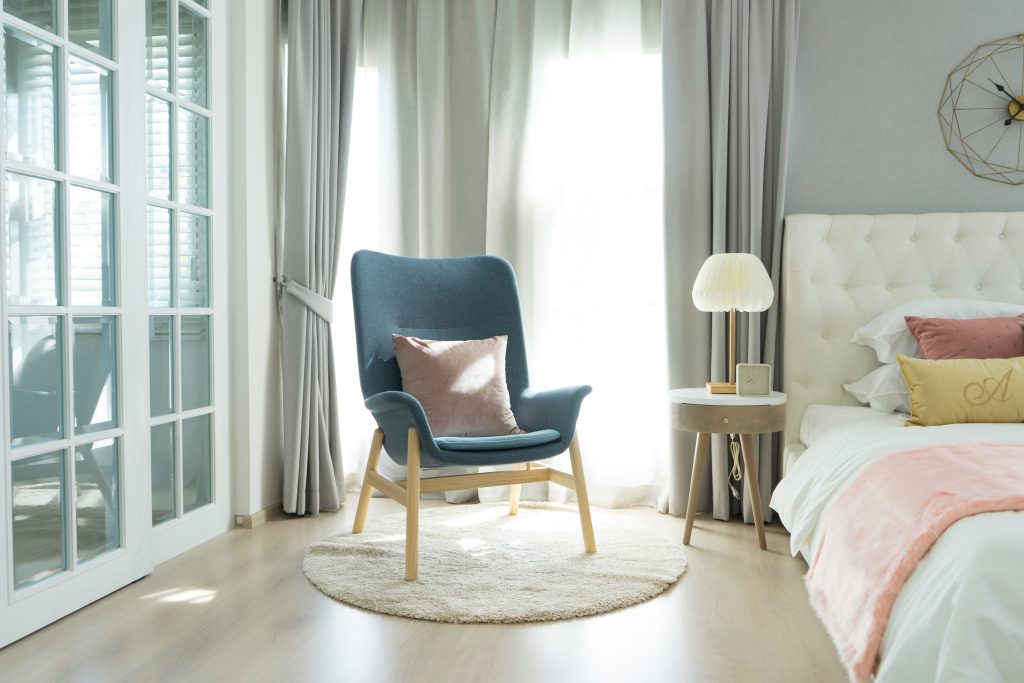How Draperies and Shades Create Warmth and Comfort
Draperies and shades are more than just decorative accents for your home. They transform spaces by adding warmth, comfort, and functionality, ensuring your interiors feel inviting and stylish. Whether you prefer luxurious fabrics, modern designs, or energy-efficient options, the right window treatments can profoundly impact the ambiance and utility of your living areas.
The Impact of Draperies and Shades on Your Home
Draperies and shades serve dual purposes: aesthetic enhancement and practical benefits. Beyond their visual appeal, they provide insulation, reduce noise, and help maintain privacy. Here’s how these essential elements create an environment of comfort and warmth:
1. Enhancing Visual Appeal
Draperies and shades act as a focal point in a room. They frame windows beautifully, adding elegance and depth to your interiors. Luxurious fabrics like velvet or silk create a rich, warm atmosphere, while lighter materials such as linen or cotton lend an airy, cozy vibe.
- Color Choices: Warm tones like earthy browns, soft oranges, and creamy whites naturally evoke comfort.
- Patterns and Textures: Intricate designs or plush textures add character and charm, fostering a homely feel.
2. Creating a Sense of Privacy
Nothing feels more relaxing than knowing your personal space is protected. Draperies and shades create a barrier between your home and the outside world. Opaque drapes or layered treatments block prying eyes while maintaining a stylish appearance.
3. Regulating Natural Light
Adjusting the amount of sunlight entering your home is a powerful way to influence mood and comfort. Sheer shades diffuse harsh sunlight, filling the space with soft, ambient light. Blackout draperies, on the other hand, block light completely, making them perfect for restful evenings or a cozy movie night.
4. Providing Insulation
One of the most practical benefits of draperies and shades is their ability to insulate your home. Heavy drapes and cellular shades act as barriers, trapping heat during winter and keeping spaces cool in summer. This not only enhances comfort but also lowers energy costs.
5. Reducing Noise Levels
Thick draperies or layered treatments absorb sound, making them a great choice for urban settings or noisy neighborhoods. They create a serene and peaceful environment, enhancing your home’s overall coziness.
Types of Draperies and Shades to Consider
Choosing the right draperies and shades depends on your needs, style preferences, and functional requirements.
Draperies for Timeless Elegance
- Pinch Pleat Drapes: Classic and sophisticated, ideal for formal spaces.
- Grommet Drapes: Contemporary and sleek, perfect for modern homes.
- Sheer Curtains: Light and breezy, adding an ethereal touch to any room.
Shades for Modern Versatility
- Roman Shades: A blend of tradition and modernity, with clean lines and soft folds.
- Roller Shades: Minimalistic and functional, great for compact spaces.
- Cellular Shades: Known for their energy efficiency, these shades feature a honeycomb structure that traps air.
Design Tips to Maximize Warmth and Comfort
- Layer your window treatments: Combining draperies with shades offers the best of both worlds. Use blackout shades for functionality and lightweight drapes for aesthetic flair.
- Use floor-length draperies: Floor-length drapes make ceilings appear higher and spaces more inviting. For a luxurious touch, let the drapes “puddle” slightly on the floor.
- Match or complement your décor: Choose draperies and shades that harmonize with your furniture and color palette. Warm tones and natural fabrics often pair well with rustic or traditional themes, while sleek materials complement modern designs.
How Draperies and Shades Create Warmth in Winter
During colder months, heavy draperies and thermal-lined shades prevent drafts and retain heat. Opt for insulated curtains or cellular shades to maximize energy efficiency while adding a layer of cozy sophistication to your interiors.
Maximizing Winter Comfort
- Close draperies at dusk to retain warmth.
- Use textured fabrics like velvet for added insulation.
- Pair shades with sheer curtains to balance privacy and natural light.
FAQs
What types of fabrics are best for creating warmth and comfort?
Heavier fabrics like velvet, wool, or thermal-lined cotton are ideal for insulation and coziness. Sheer materials can be layered for a softer, more inviting look.
Can draperies and shades help save energy?
Yes, insulated drapes and cellular shades can significantly reduce heating and cooling costs by maintaining indoor temperatures.
How do I clean and maintain draperies?
Regular vacuuming and occasional professional cleaning keep draperies in top condition. For shades, use a damp cloth or follow manufacturer recommendations.
What’s the difference between draperies and curtains?
Draperies are often lined, heavier, and more formal, while curtains are lighter, unlined, and casual.
Are blackout shades suitable for every room?
Yes, blackout shades are perfect for bedrooms, nurseries, and media rooms where light control is essential.
How do I choose colors for draperies and shades?
Select warm tones like beige, brown, or muted reds for a cozy feel. Neutral shades blend well with most interiors, offering timeless appeal.
Draperies and shades are more than window coverings—they are integral to creating a warm, comfortable, and stylish home. By carefully selecting the right fabrics, designs, and colors, you can transform your living space into a haven of tranquility and charm. Whether you’re looking to insulate your home, reduce noise, or simply add a touch of elegance, these versatile treatments have you covered.
Choosing the window treatments for your home has never been simpler. Schedule your FREE in-home consultation, and we’ll take care of the rest. A Design Consultant will visit your home, handle precise measurements, and guide you in selecting the best styles for your windows. We’ll even take care of installation!
Call us today at (330) 452-9008 to get started!

